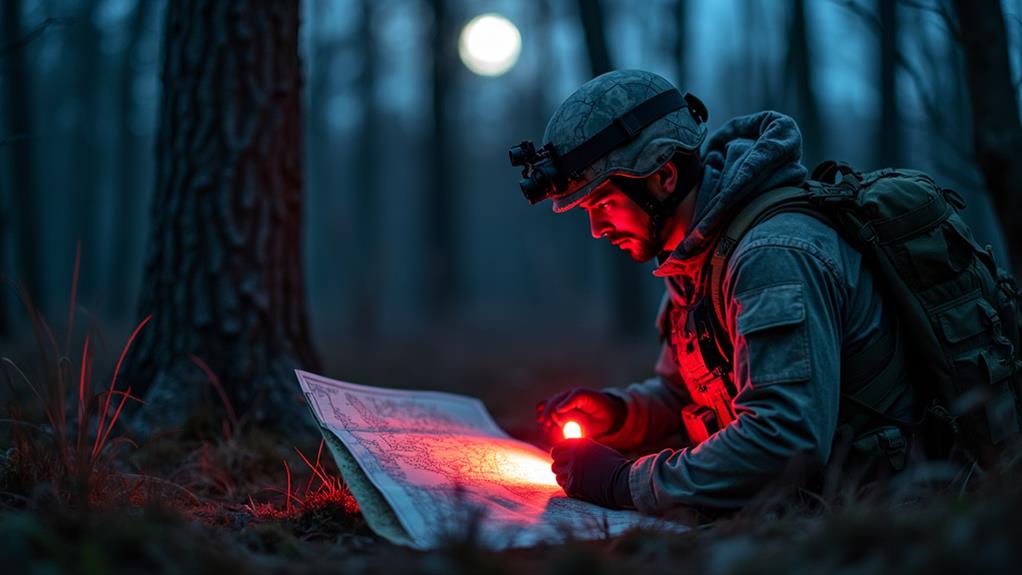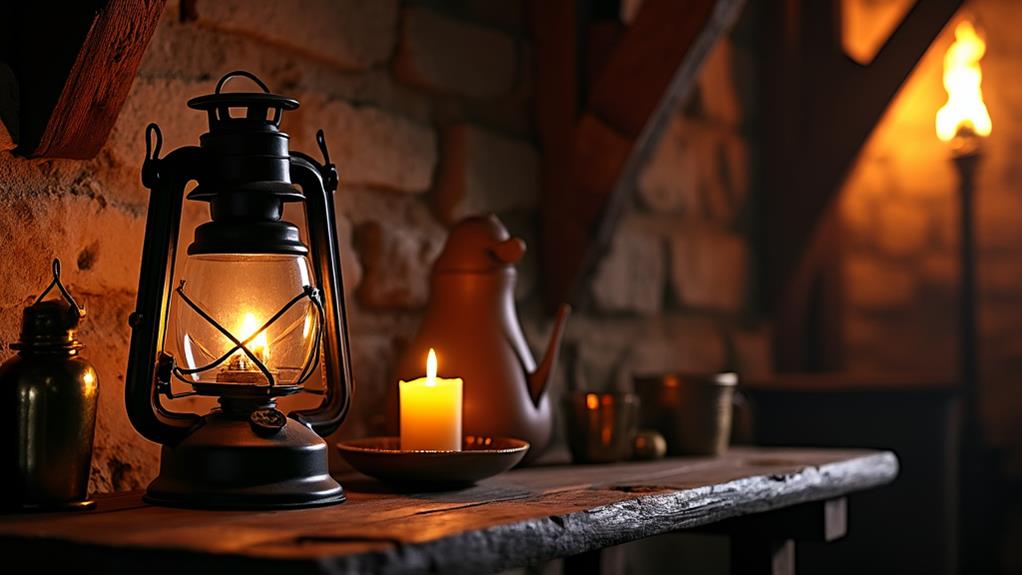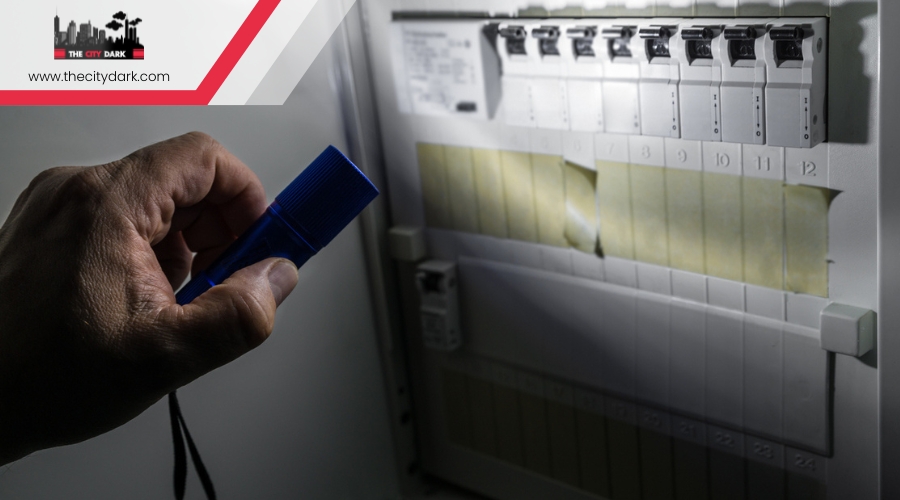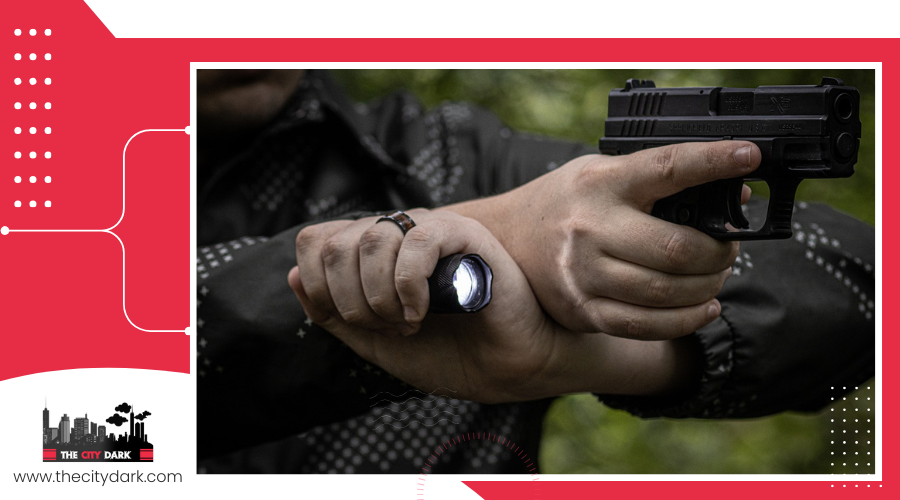How Effective Are Tactical Flashlights?
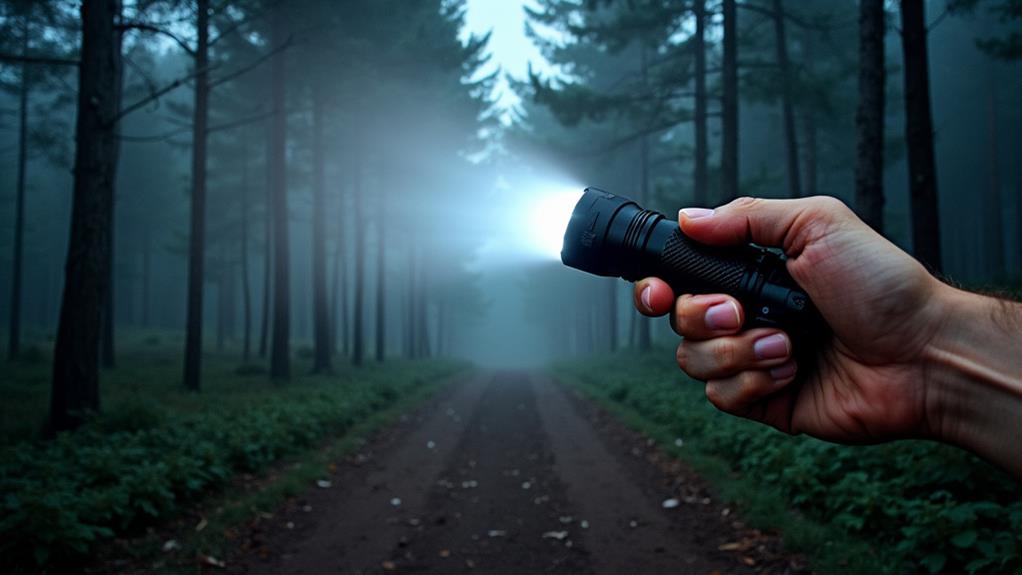
Tactical flashlights are often lauded for their high lumen outputs, frequently exceeding 3000 lumens, making them capable of much more than merely illuminating dark spaces. These devices can disorient attackers with strobe modes, endure harsh environments due to their durable construction, and remain functional in adverse weather thanks to their waterproof ratings. But do these features make them indispensable for both military personnel and outdoor enthusiasts? Let's delve into the specifics to determine whether tactical flashlights truly live up to their reputation.
Tactical Flashlight Overview
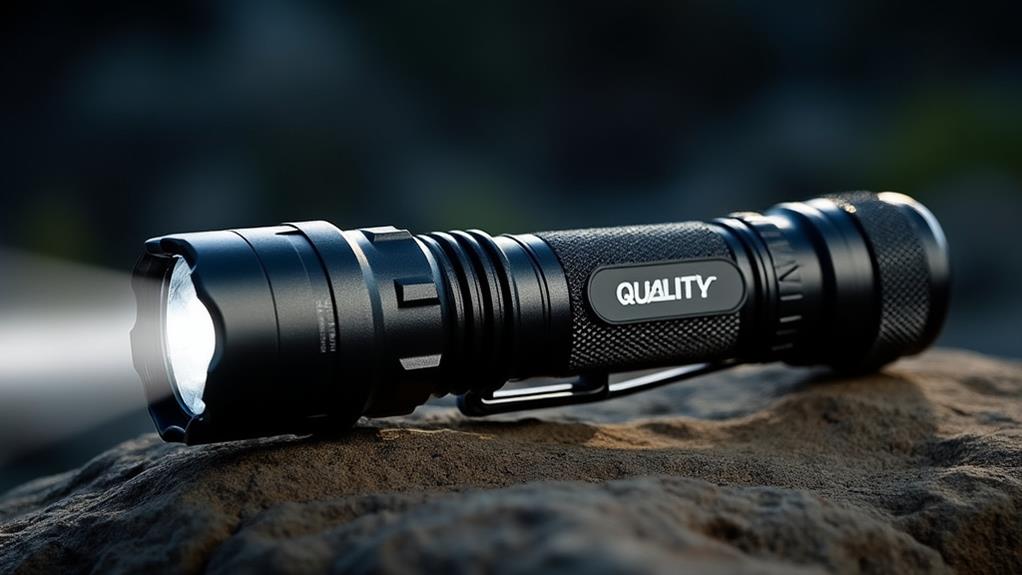
Tactical flashlights are engineered for high-intensity use in military and law enforcement settings, typically featuring a minimum output of 120 lumens, with many models exceeding 500 lumens for enhanced visibility. When you need a dependable light source, a tactical flashlight is your best choice. Constructed from robust materials like aircraft-grade aluminum, these flashlights can endure harsh conditions and resist damage.
A key feature is their multiple light modes. Whether you need a high beam for maximum brightness, a low beam to conserve battery, a strobe mode for self-defense, or an SOS signal for emergencies, a tactical flashlight has you covered. This versatility makes it invaluable in numerous situations, from self-defense to emergency signaling.
Additionally, many tactical flashlights are waterproof, adhering to various IP ratings, ensuring they function effectively even in adverse weather conditions. The compact design ensures they are portable and easy to carry, fitting comfortably in your hand during high-stress scenarios. With a tactical flashlight, you're equipped for effective self-defense and prepared for any situation.
Key Features
When evaluating a tactical flashlight, consider several key features to ensure it meets your needs effectively. First, examine the lumen count. A high-quality flashlight typically starts at 120 lumens, but tactical models often range between 200 and 5000 lumens, offering flexibility for various lighting situations.
Next, check for multiple light modes. Tactical flashlights usually include settings like high, low, strobe, and SOS, enabling you to adjust the light for different scenarios. These modes are crucial for emergencies or signaling.
Durability is another essential feature. Most tactical flashlights are constructed from aircraft-grade aluminum, ensuring they can endure harsh conditions. This durability is vital for reliability during emergencies. Additionally, consider the flashlight's waterproof capabilities. Many models have IP ratings from IPX4 (splash-proof) to IPX8 (submersible), making them suitable for adverse weather conditions.
Uses and Applications
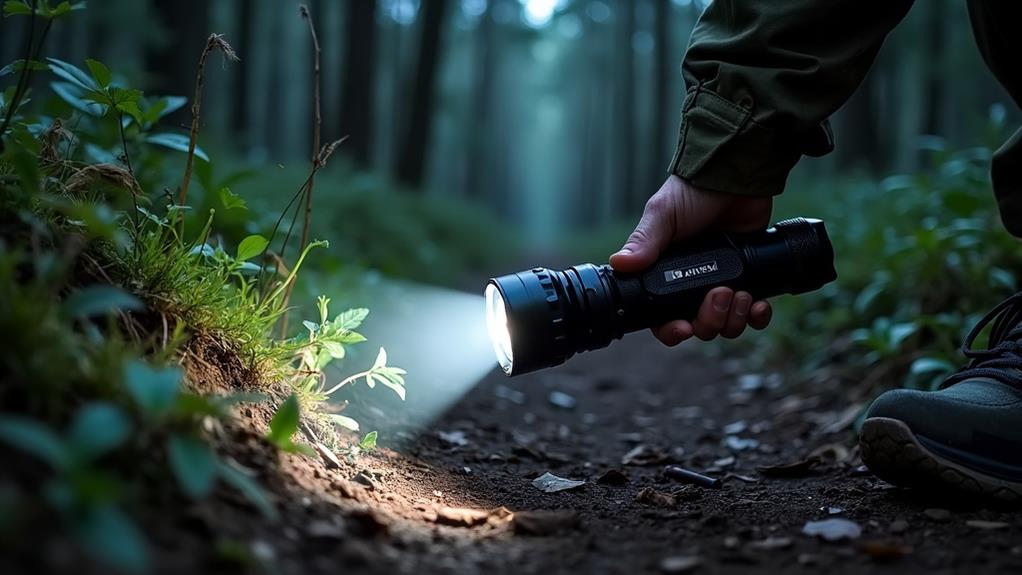
In a variety of real-world situations, a tactical flashlight proves invaluable. Whether you're dealing with an emergency scenario or engaging in outdoor activities, a tactical flashlight is an essential tool. These flashlights are designed not only to emit a bright light but also to serve multiple purposes.
For one, tactical flashlights are excellent self-defense tools. They can temporarily blind an assailant, giving you a crucial moment to escape or counterattack. In emergency scenarios, they ensure you can navigate through dark environments, such as during power outages or natural disasters. Their bright light cuts through the darkness, helping you find your way.
Moreover, tactical flashlights function effectively as signaling tools. Many models come with strobe or SOS modes to attract attention during accidents or emergencies. Military personnel rely on these flashlights to illuminate dark areas, enhancing their situational awareness and signaling during combat. Additionally, outdoor enthusiasts find them indispensable for activities like hiking and camping, where they help identify potential hazards in low-light conditions.
Here's a quick look at their diverse applications:
- Self-defense tool
- Emergency scenarios
- Signaling tools
- Military use
- Outdoor activities
A tactical flashlight is more than just a light source; it's a versatile, life-saving device.
Self-Defense Techniques
Using a tactical flashlight for self-defense can be highly effective due to its high lumen output, often exceeding 3000 lumens. Many models include a strobe mode that can disorient attackers, providing a crucial advantage. Mastering these features can give you valuable seconds to escape or control the situation.
Blinding Attackers Effectively
Tactical flashlights are essential tools for self-defense, offering more than just illumination. With their bright beams, these devices can temporarily blind an attacker, giving you a critical advantage. Typically, a tactical flashlight has a minimum brightness of 120 lumens, with many models exceeding 500 lumens. This intense light can disorient an attacker, providing valuable seconds to escape or counterattack.
Using the Harries Technique, you can hold the flashlight stably, effectively illuminating and blinding an assailant. The strobe mode, available on most tactical flashlights, enhances this disorienting effect by creating a flickering light that disrupts the attacker's focus and coordination. To maximize its effectiveness:
- Aim for the eyes: Direct the beam into the attacker's eyes to induce temporary blindness.
- Use strobe mode: Activate the strobe mode to cause confusion and disorientation.
- Combine with movement: Move to a safer position while the attacker is disoriented.
- Employ as a striking weapon: Utilize the flashlight's striking bezel for close-quarters combat.
- Practice techniques: Regularly practice self-defense techniques to improve your response time.
Utilizing Strobe Mode
Mastering the strobe mode on your tactical flashlight can significantly enhance your self-defense capabilities. When activated, the rapid flashes can temporarily blind and disorient an assailant, providing a crucial opportunity to escape or defend yourself. Typically operating at a high frequency of around 10-15 Hz, the strobe mode is more effective than a constant beam in disrupting an attacker's vision.
In emergencies, the strobe feature can also serve as a distress signal. Its distinctive flashing pattern is easily recognizable and can attract attention from bystanders or law enforcement, increasing your chances of receiving timely assistance.
Employing the Harries Technique, where you hold the flashlight in one hand and use the other hand for support, can enhance your stability and effectiveness when using the strobe mode. This technique is particularly beneficial in high-stress situations, ensuring a firm grip and accurate aim.
Tactical flashlights are built to withstand high-stress scenarios, offering reliable performance when you need it most. By practicing and becoming proficient with your flashlight's strobe mode, you add a valuable tool to your self-defense arsenal, boosting your preparedness and confidence.
Best Practices
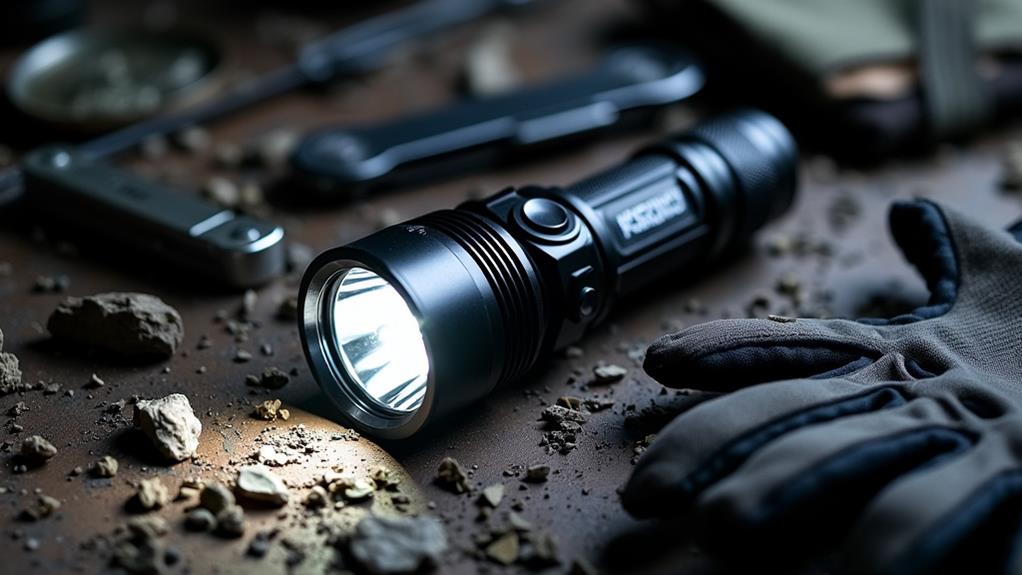
Effectively using your tactical flashlight can be a game-changer in emergencies or self-defense situations. Understanding and practicing best practices ensures you're prepared when it counts. Begin by familiarizing yourself with techniques like the Harries and Ayoob methods to optimize control and stability. These techniques enhance your performance during high-stress scenarios and improve your self-defense capabilities.
In emergencies, activate the strobe or SOS mode for signaling. These functions are highly visible from a distance, increasing your chances of being noticed and rescued. When navigating dark environments, use your tactical flashlight to illuminate your path. This not only helps you see better but also enhances your situational awareness, keeping you alert to potential threats.
Regular maintenance is essential to ensure your tactical flashlight performs at its best. Frequently test brightness levels and battery life to avoid being caught off guard when you need it most.
- Harries Technique: Hold the flashlight in your dominant hand with your non-dominant hand underneath for stability.
- Ayoob Technique: Hold the flashlight in your dominant hand with your non-dominant hand on top for added control.
- Signaling: Use strobe or SOS modes in emergencies.
- Illumination: Light your path while maintaining situational awareness.
- Maintenance: Regularly check brightness and battery life.
Selecting the Right Flashlight
Choosing the right flashlight can be crucial in vital situations. When selecting a tactical flashlight, start by considering the brightness levels. A minimum of 120 lumens is typically effective for tactical use. Ensure the light source is versatile for various scenarios you might encounter.
Next, evaluate the battery life by checking runtime specifications. Look for flashlights that offer rechargeable options for convenience and sustainability. It's also important to assess the weight and size to ensure the flashlight is portable and comfortable for everyday carry. Ideally, it should fit comfortably in the palm of your hand.
Durability ratings are essential as well. Look for IP68 ratings for waterproofing and impact resistance to ensure the flashlight can withstand harsh conditions and rough handling. User reviews are invaluable for gauging reliability and effectiveness in real-world scenarios. They can help you identify the best tactical flashlight for your needs, offering insights that spec sheets might miss.
Here's a quick comparison to help you decide:
| Feature | Tactical Flashlight | Regular Flashlight |
|---|---|---|
| Brightness Levels | ≥ 120 lumens | Varies, often lower |
| Durability Ratings | Often IP68 | Generally lower |
| User Reviews | Focus on reliability | Mixed effectiveness |
Selecting the right flashlight ensures you're prepared for anything.
Performance Standards
After selecting the right tactical flashlight, it's crucial to understand the performance standards it adheres to. Tactical flashlights are typically evaluated against the ANSI FL1 Standard, which tests performance metrics such as brightness, beam distance, run time, and waterproof ratings. This ensures reliability and helps you make informed decisions.
Brightness, measured in lumens, ranges from a minimum of 120 lumens to high-performance models reaching up to 20,000 lumens. This allows you to select a flashlight that provides adequate illumination for various situations.
Beam distance, measured in meters, indicates how far the light can project. Tactical flashlights usually cover distances from 100 to over 1,500 feet, offering flexibility based on your requirements.
Run time specifies how long a flashlight can operate on a single charge. Many tactical models are designed for extended use, lasting from several hours to days, depending on the brightness settings.
Waterproof ratings, indicated by IP ratings, assess the flashlight's resistance to water and dust. Higher ratings like IPX8 mean the flashlight can withstand submersion, adding durability in harsh conditions.
Key performance metrics:
- Brightness (lumens)
- Beam distance (meters)
- Run time (hours/days)
- ANSI FL1 Standard
- Waterproof ratings (IPX8)
Understanding these performance standards ensures you choose a reliable, high-performing tactical flashlight.
Community Insights
Community insights reveal that tactical flashlights are highly valued for their brightness and versatility. Users frequently commend these tools for their effectiveness in self-defense and emergency situations. When selecting a tactical flashlight, the lumens rating is often a primary consideration. A minimum of 500 lumens is recommended for optimal performance in low-light conditions.
Durability and water resistance are also crucial factors. Models with IPX ratings of IP68 or higher are particularly favored among outdoor enthusiasts, ensuring the flashlight can endure harsh environments. Features like strobe modes and multiple brightness settings are often highlighted for enhancing the flashlight's usability in various scenarios.
Brands such as Fenix, Nitecore, and Olight are consistently recommended for their reliability and performance, reflecting a consensus on quality within the tactical flashlight community. Whether used for camping, hiking, or personal safety, a well-chosen tactical flashlight provides both brightness and versatility. Community insights underscore the importance of selecting a flashlight with a high lumens rating, robust durability, and essential features like strobe modes and multiple brightness settings to ensure preparedness for any situation.

